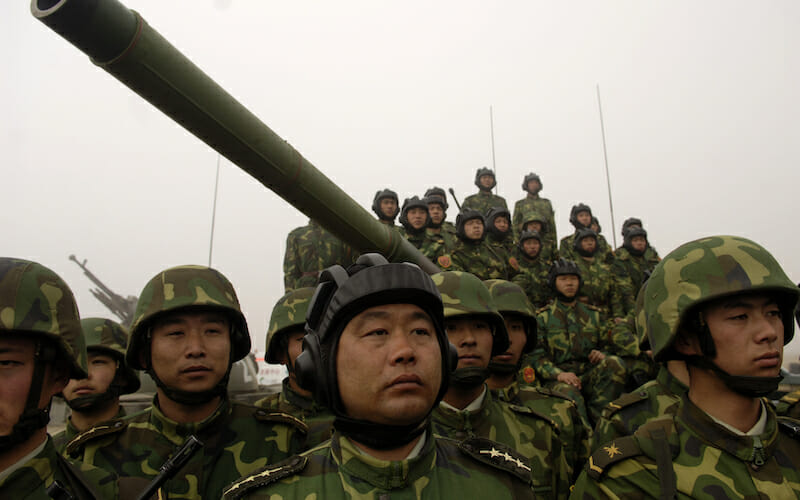
Competing for South Asia
China’s aggressive campaign to gather partners for the Belt and Road Initiative (BRI), a trade corridor stretching from Russia to Indonesia, has left the world awestruck. A clear move to cement its superior position in Asia, it has also caused a significant change in the alliances of the region, creating troubles for India – the other regional power. China introduced its plan for the BRI in 2013 and within a span of four years, 65 countries have agreed to be a part of this multibillion-dollar project. While some, like Pakistan have been traditional Chinese allies, in the case of others like Sri Lanka, Nepal, and Maldives, the move to partner with China has caused some disappointment in Indian diplomatic circles since it means weakening the decades of long relationships with India.
Since China’s rise to power, India has been wary of the Chinese policy of encirclement which aims to cut India off from its terrestrial and maritime neighbours by building ports and military bases at strategic locations. The Gwadar port in Pakistan, Hambantota development zone in Sri Lanka and the China – Pakistan Economic Corridor (CPEC) are some of the more recent examples that India has been unable to stop or compete with. But the dramatic turn of the small island country of Maldives towards China has caused the most discomfort for India. China set up an embassy in the Maldivian capital of Male in 2011 and within six years it is already the largest investor in the country, has a free trade agreement and has been commissioned with several large infrastructure projects near Male.
The new president Abdullah Yameen has taken a clear pro-China stance ignoring Indian protests over the docking of Chinese ships in Maldives and suspended three councilors for meeting with the Indian ambassador without approval. In a similar vein, Nepal has noticeably shifted towards China since India’s objectionable behaviour during the Madhesi blockade of highways between India and Nepal.
The rapid shift in alliances in South Asia can be largely attributed to the differing styles of influence adopted by the Dragon and the Elephant. Till the 1990s, the smaller countries in South Asia had strong ties with India due to a lack of alternatives. Traditionally, Indian diplomacy in its backyard has relied heavily on cultural similarities and due to its small economy, it was unable to give large loans or aid packages to other countries. The red-tapism and tardiness of the Indian political system went unchallenged despite the damage it caused to allies. In return, India wielded significant influence over its allies’ foreign policy, especially with smaller countries like Bhutan, Maldives and Nepal. Coupled with its domineering behaviour in regional forums like the South Asian Association for Regional Cooperation (SAARC), it caused resentment against India.
The end of Chinese isolationism and its active engagement with India’s neighbours provided an alternative. Drawing upon its $12 trillion economy, China invested heavily in foreign countries and demanded little in return. Its record of neutrality and non-interference makes it an ideal partner for smaller South Asian countries who now get a steady line of credit and an alternative to Indian dominance. China’s one-party system, further strengthened after Premier Xi managed to have the term limit on the presidency abolished, enables it to act with a decisiveness and speed with which India cannot compete. A recent statement by Mr. Suraj Vaidya, the Chairman of the SAARC Chamber of Commerce exemplifies the mindset of India’s neighbours. He stated that despite Nepal’s traditionally strong relations with India, it will have no choice but to turn to China if India cannot keep up a continuous flow on investment into Nepal, a country heavily dependent on aid from neighbouring countries. Similar reasons have pushed other South Asian countries to turn to China, which promises large investments even at the possible risk of ending up in a debt trap.
Recognising the urgency of the situation, India has launched several initiatives like the Act East Policy and the Bay of Bengal Initiative for Multi-Sectoral Technical and Economic Cooperation (BIMSTEC) but it needs to get creative if it wants to stop China from chipping away at its sphere of influence. Though multilateral organisations are a good place to exert soft power and consolidate regional influence, more solid measures need to be taken bilaterally to ensure India’s allies stay with India.
The Afghan-India Friendship Dam, recently inaugurated in the Herat province of Afghanistan resulted in Indian investment in infrastructure development in Afghanistan and the recently inaugurated Chabahar port in Iran are success stories for India that demonstrate its ability to balance cultural diplomacy with mutual strategic interests and economic incentives. But such examples are few and far between.
India’s reactionary foreign policy has also emerged as a major impediment to its emergence as a regional heavyweight. Recognising its eroding influence in its backyard, India should look towards its extended neighbourhood – Southeast and Central Asia to gain partners and counter Chinese incursions into the Indian Ocean. The policy framework for this already exists in terms of India’s “Act East” policy and Prime Minister Narendra Modi’s recent visit to Central Asia but this has not been supplemented by targeted investment to cement the relationships. So far, it has not been successful in establishing strong ties with Southeast Asian nations, an alliance that would put China on alert. Despite Vietnam’s repeated invitations to participate in joint exploration of oil fields in Vietnam’s exclusive economic zone, India’s response has not been very enthusiastic.
A revision of mindset is in order since India can no longer take its influence in South Asia for granted. It needs to seriously commit to a timely delivery of services, a mutually beneficial and respectful relationship with its neighbours and show the willingness to back-up its diplomatic ambitions with economic benefits for partner countries. Partisan shifts in policy need to be subjugated to strategic needs of the country if India wishes to slow the advance of the Chinese juggernaut and maintain its influence in South Asia.
